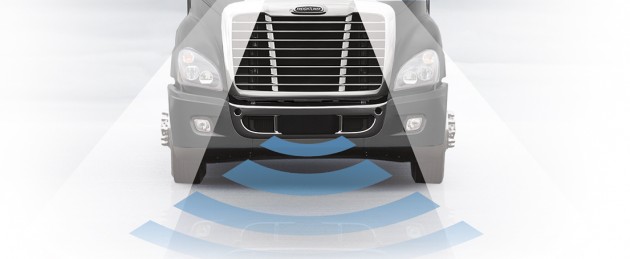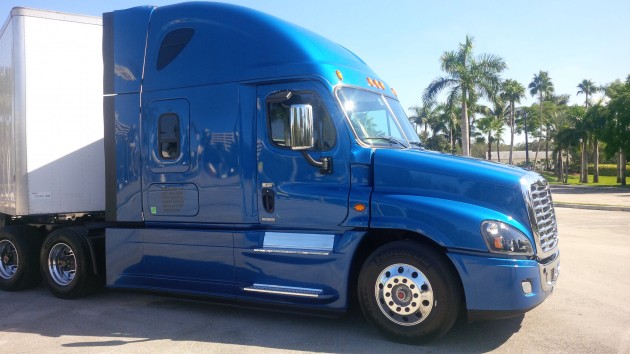Detroit demonstrates integrated suite of active safety systems
MIAMI, Fla. — Detroit demonstrated for the first time its new suite of active safety systems, dubbed Detroit Assurance.
The new safety platform will initially offer radar-based adaptive cruise control (ACC) and active braking assist (ABA) as well as an optional camera-based lane departure warning system. Detroit Assurance is available for order now on new Freightliner Cascadia and Cascadia Evolution tractors.

The systems have been adapted from technologies deployed on Mercedes-Benz trucks in Europe.
“We’ve been developing these products in our family for years,” said Brad Williamson, powertrain marketing manager with Detroit. The systems have more than nine million development miles in Europe and 1.5 million miles here in North America, in addition to 3.5 billion real-world miles accumulated by customers in Europe.
“By all means, this is a proven technology we’re bringing over here for the North American market,’ said Williamson.
Adaptive cruise control maintains a safe following distance while the truck is in cruise, by applying the engine brake, downshifting the DT12 transmission and applying the service brakes when the truck is following the vehicle ahead of it too closely. The default setting is 3.5 seconds but it can be adjusted by the fleet operator, or even by the driver if an optional headway switch is selected.
Drivers can leave cruise control on even in heavy traffic and the truck will adjust its speed as necessary to maintain a safe following distance. The system was effective during demonstrations on Miami-area freeways. If a car pulls directly in front of the truck there will be no intervention as long as the car is travelling faster than the truck. However, if the car slows down, ACC steps in and slows the truck down and then returns to the set cruise speed when there are no longer any vehicles immediately in front of the truck.

Williamson said drivers can often travel dozens of miles, even in traffic, without having to touch the brake or accelerator when using ACC.
Active Braking Assist of course is an integral part of ACC, however it also works when the truck is not in cruise. ABA helps to mitigate rear-end collisions by slowing or stopping the truck when a metallic object is in its path. But the system first mutes the radio and sounds an alarm to get the driver’s attention before intervening with the brakes.
Detroit Assurance also offers a lane departure warning system that uses a camera mounted in the windshield to detect the lane markings on the road and sounds an alarm when the driver strays outside of his lane without a turn signal activated. A disable switch in the cab allows the driver to turn the system off for a 15-minute period if he’s in a construction zone where crossing the line is inevitable. The system resumes when speeds of 47 mph are reached.
Currently, these safety systems are not integrated into Virtual Technician or any other telematics platform to notify fleet managers of interventions or lane departures, however officials said Detroit Assurance will be expanded to add more capabilities.
Freightliner already offers Meritor Wabco’s OnGuard collision mitigation systems, which provides many of the same benefits. OnGuard will continue to be an option on Freightliner trucks and currently about 10% of customers select it.
However, Williamson said the integration of Detroit Assurance with the engine and transmission allow for smoother braking and acceleration compared to other products already on the market. The other benefit is that information related to the system is shown on the dash display rather than on a separate screen mounted elsewhere inside the cab.
Detroit Assurance is available for order now on 2016 model year Freightliner Cascadia and Cascadia Evolution trucks, with deliveries expected to commence in March 2015.
Have your say
This is a moderated forum. Comments will no longer be published unless they are accompanied by a first and last name and a verifiable email address. (Today's Trucking will not publish or share the email address.) Profane language and content deemed to be libelous, racist, or threatening in nature will not be published under any circumstances.




The only thing I will like to know is how to remove or delete this piece of junk system. My 2011 cascadia has the onguard mitigation system and it’s too intrusive. I don’t need any electronically garbage to do my job. It’s my own truck. Why the hell the dealerships do not delete this on my request.